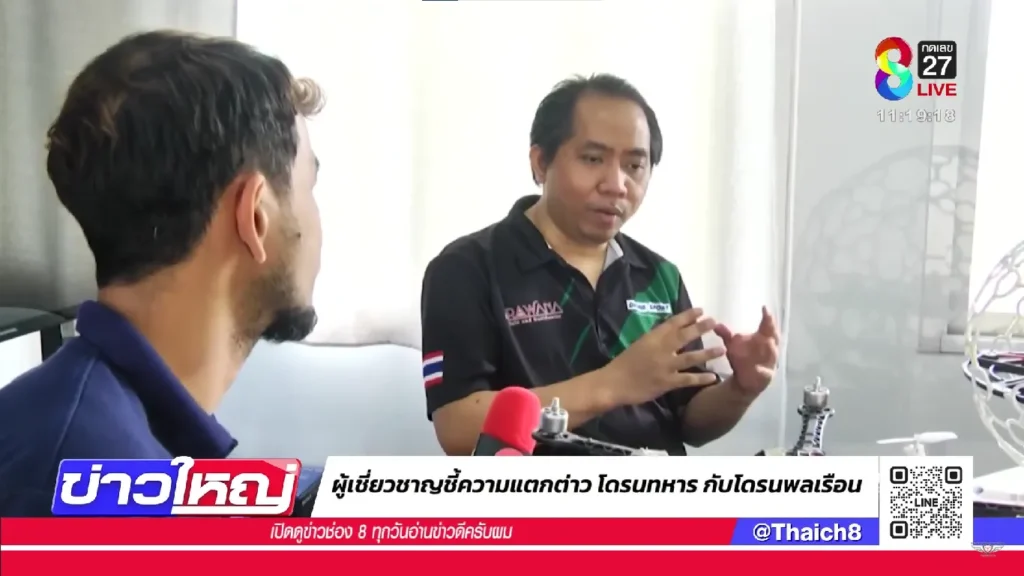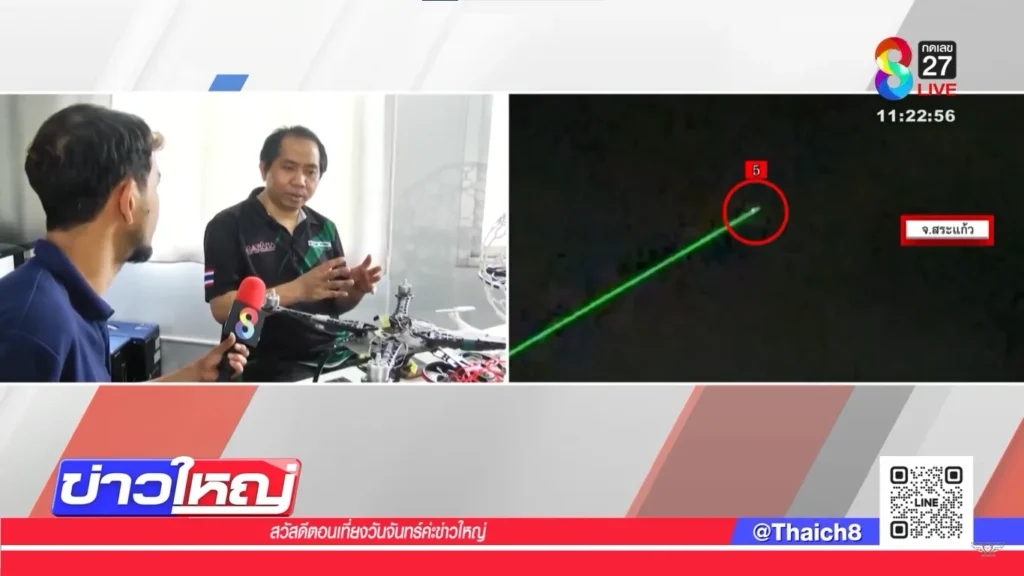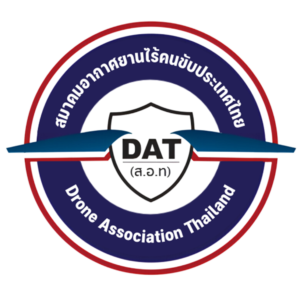Currently, the use of drones in various missions, whether civilian or military, has become commonplace in many countries. When any incident involving drones occurs, both security agencies and the public face a critical question: How can we distinguish between civilian drones and military drones?
Experts confirm that it is "difficult to distinguish."
Mr. Janyawut Chatianulak, a drone expert, gave an interview saying ะhe line between these two types of drones is "very thin." Currently, drones used in military operations are no longer limited to large drones or specific shapes. Small drones designed for general use can also be modified for military missions, such as reconnaissance or weapon deployment, depending on the "mission and modifications" made to the drone.

"In the past, military drones may have had large wings and a clearly visible body, but now even small drones can be used for military missions... To determine what type of drone it is, you need to look at what it is used for and what additional equipment it has."
Mr. Janyawut Chatianulak
What to observe in order to distinguish between them.
Customization Features: If a drone is equipped with unusual equipment, such as high-resolution cameras, payload release devices, or special communication systems, it often indicates a specific purpose for its use.
Flight Behavior and Mission: An important observation method is "flight behavior," such as flying at night, unusual flight paths or ranges, or landing in unexpected locations.
Use of Monitoring Technology: High-resolution cameras help zoom in to observe the drone's structural details in case of suspicion. However, in reality, without detection equipment or advanced technology, it is not possible to identify it 100%.
Key issue: It’s not just about distinguishing between types, but also about finding the operator.
The expert stated, "Although sometimes drones can be captured in images or details can be observed, tracking the source, control point, or the actual operator is more difficult." This is because drones can be controlled remotely or even in dark areas, and without specialized detection systems, it is almost impossible to trace them.
Guidelines and Safety for the Public
Due to the difficulty in distinguishing and assessing the intentions of drones. The public should prioritize safety above all. If a suspicious drone is spotted or exhibits abnormal behavior. Report to the authorities immediately. And avoid attempting to intercept or shoot down the drone yourself, as it not only poses a danger but could also have unnecessary security implications.

The development of technology and detection systems is the key to the future.
Finally, the expert suggests that developing a detection system to accurately distinguish the types and identify the drone operators is a key goal that will help ensure safety at both the societal and national security levels.
Summary
Experts in drones clearly reflect that distinguishing between "civilian drones" or "military drones" is challenging, requiring consideration of various factors such as the mission, modifications, equipment, and flight behavior. Meanwhile, tracking the operator or underlying intentions is even more complex. The best approach in the current situation is to remain cautious, observe carefully, and report to the authorities immediately when something suspicious is noticed. This is to ensure the safety of all parties and reduce risks from new threats brought by drone technology.
Full interview content available at:
Follow updates on the Thai-Cambodian border conflict at: https://drone.or.th/drone-border-tension/
For more information, please contact: LINE @droneth
